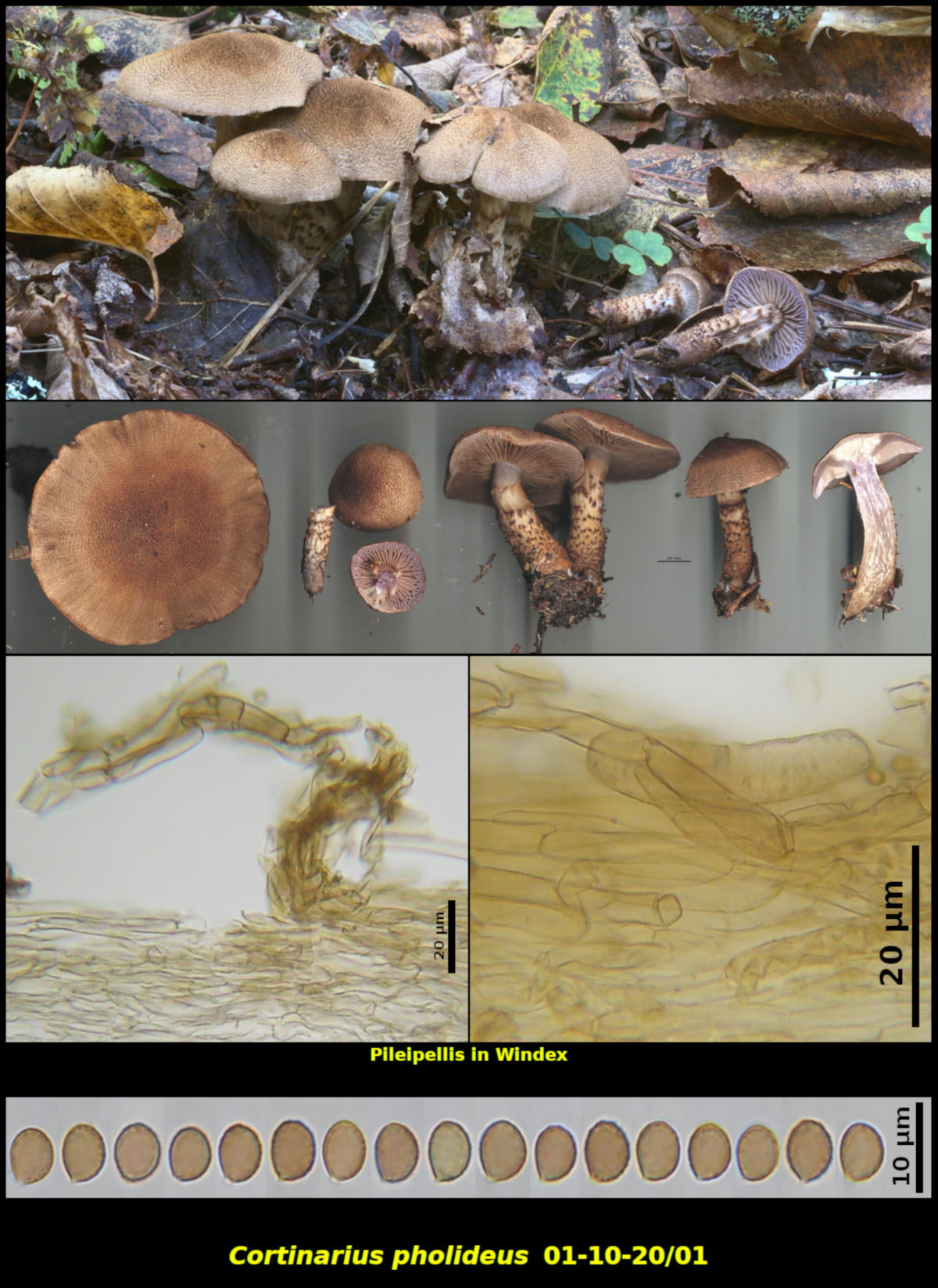Fleshy Fungi of New Brunswick >>
Cortinarius pholideus
Cortinarius pholideus (Lilj.) Fr.

Gregarious to clustered (9) in soil and leaf litter, associated with Betula papyrifera, Little Lepreau, New Brunswick (01-10-20/01).
Pileus convex-hemispherical at first, expanding to broadly convex and finally nearly plane, with a low broad umbo, dry, densely squarrose with minute brown (HSV15:70:30-40) scales that characterize the overall colour, smooth at the margin in young basidiomata but later becoming slightly plicate, 23-75 mm in diameter. Stipe equal, dry, densely scaly below the annular zone with squarrose-squamulose scales similar in colour to those of the pileus, dull buff (HSV45:05-10:95) below the scales, pale violet (HSV260:15-20:100) above the annular zone, with violet colour fading in age, 48-75 X 5-9 mm. Lamellae pale violet (HSV260:15-20:100) at first but soon fading to pale brown as the spore mature, close, adnexed, not marginate. Cortina white. Universal veil brown. Flesh dark violet grey (HSV260:050-10:60) in much of the pileus, with a whitish and probably faded area in the centre of the pileus, concolourous with the surface tissues in the supraannular region of the stipe and dull yellow brown (HSV35:30-40:60-70) in the lower part of the stipe, with a nondescript odour and taste.
Basidiospores orange brown in spore print, broadly ellipsoidal, moderately to coarsely roughened, 5.6-7.4 x 4.6-5.2 µm, Q = 1.22-1.48 (average[40]: 6.5 x 4.8 µm, Q = 1.34. Hymenial cystidia lacking. Pileipellis a cutis to trichoderm of brown radially encrusted hyphae, ascending in fasicles to form the scales, with a compact subpellis of parallel hyphae. Basidia 4-spored, with a basal clamp connection. Clamp connections abundant thoughout.
This is an easy species to recognize because of its brown-scaly pileus and stipe and its association with birch. Typical of Cortinarius subgenus Telamonia both the pileus and stipe are dry. The basidiospores of Collection 01-10-20/01 are slightly smaller than those described in Funga Nordica, having an average length and width below the lowest absolute values given for the European material.
Photograph: D. Malloch (01-10-20/01).